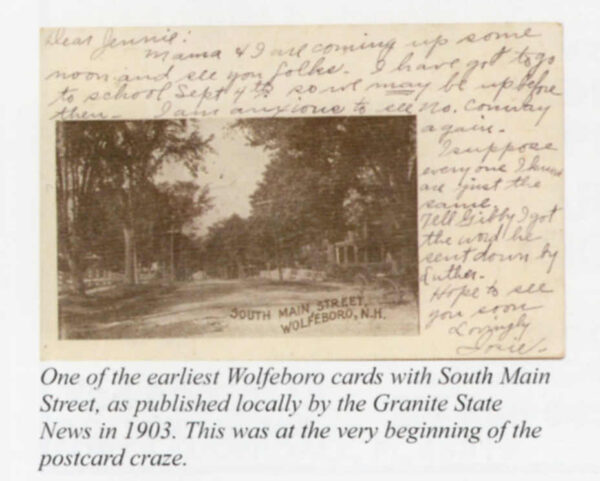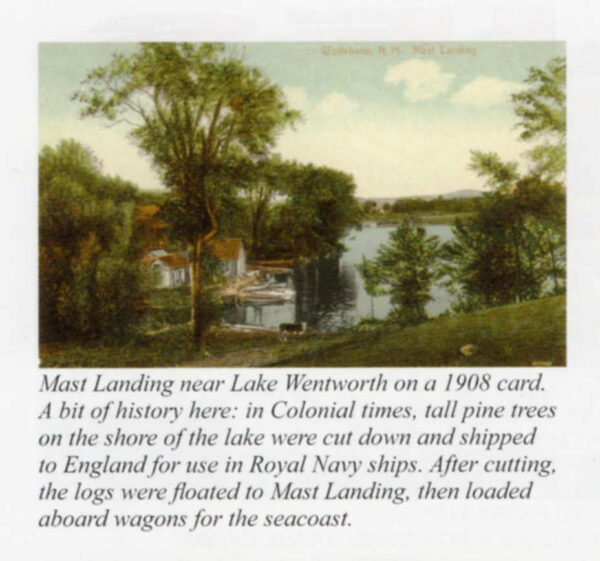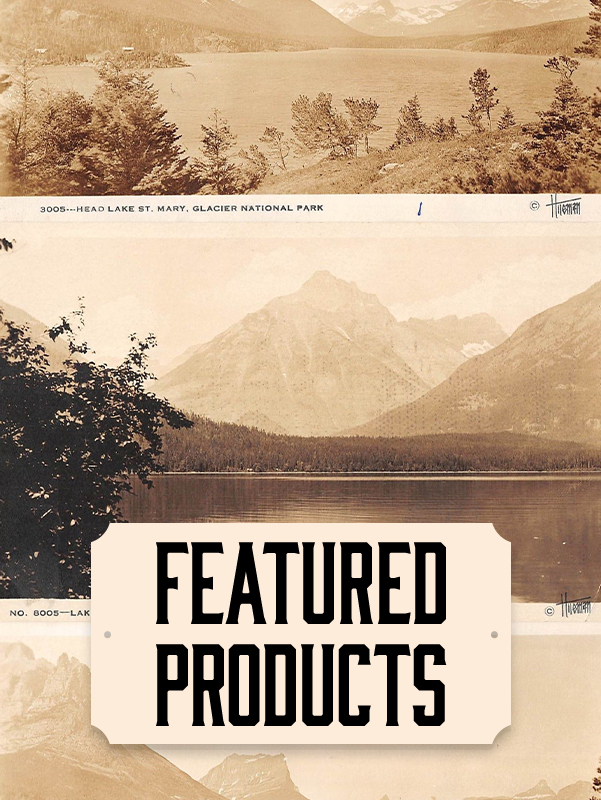Originally published in Postcard World Magazine on July 10, 2010
Postcard collector and researcher Q. David (Dave) Bowers has enjoyed deltiology for a long time – especially cards that have a link with interesting or, better yet, obscure history. With Mary L. Martin, he is creating what will be a reference book on postcards of American origin or interest to be published by Whitman Publishing, LLC in 2011 or 2012. In this column he shares some of his favorites, ranging from the easily available to the rare. Watch for something different in each issue!
The Postcard Craze
In the first decade of the past century, all of America was in a dither about picture postcards. They were anywhere and everywhere –omnipresent. On the main street of a typical town, one could not throw an egg without likely hitting a postcard display or rack.

The passion reached Wolfeboro, the writer’s town, a tourist community located about a two-hour drive (today, that is) north of Boston and about an hour northwest of Portsmouth on the seacoast. Wolfeboro is situated on Lake Winnipesaukee – a grand spread of water measuring about 30 miles by 15 miles if you take the extreme dimensions. It is punctuated with, they say, 365 islands – one for each day of the year.

Within Wolfeboro is Lake Wentworth, named after John Wentworth, the Colonial governor who in the early 1770s built a mansion on the shore. With a retinue of dozens of people, he came here in the warmer months, later giving the town the nickname, “The Oldest Summer Resort in America.” The fires of the Revolution were beginning to ignite and in, 1775 Wentworth, who served at the pleasure of the British Crown, was forced to flee. He decamped to Nova Scotia, where he became governor. He died in 1820, the same year his mansion caught fire accidentally and burned to the ground.
As the years passed, Wolfeboro became a magnet for tourists coming from all directions – many by sidewheel steamship from the other side of Lake Winnipesaukee. The numbers increased when a rail connection was completed in 1872.
Today, our town has a year-round population of about 7,000, but in the summer, it more than doubles as visitors fill local accommodations and, even more popularly, move into the countless camps and cabins on the lakes and in the hills. A good time is had by all!
Returning to the drift of this article and reflective of the aforementioned passion, the local paper, the Granite State News, went into the postcard business and used its job press to print black & white scenes on stiff white paper stock. On June 20, 1903, the following editorial was published:
“Last year the summer people who visited Wolfeboro felt the need of some kind of an inexpensive souvenir that they could send to their friends, but were unable to secure a really desirable article at a low price. This fact set some of our townsmen thinking. The result is that the News has put on the market a line of souvenir postal cards, with views of Wolfeboro and vicinity thereon, at the low price of 3¢ each or two for 5¢. They can be secured at the News office or the store of J.L. Young, who has the exclusive agency for them.”
The same issue included this advertisement:
“Souvenir postal cards. Views of Wolfeboro Bay, South Main Street, steamer Mount Washington, and Brewster Free Academy, on private mailing cards, just the thing to mail to your friends. On sale at J.L. Young’s store or the News office. 2 for 5¢.”
This was followed the next week by this note: “‘Just what we wanted’ is the comment about the souvenir mailing cards. Two new ones out this week, Glen Cottage and Smith’s River.” Other local subjects included Wolfeboro Bay, Brewster Academy, Lake Winnipesaukee, Upper Smith’s River and multiple views of the Old Brick School House.
On September 5, 1903, the newspaper published this:
“The souvenir postals put on the market this spring have had such a good sale that the series will be materially enlarged next year by the addition of several new views. One store sold as many as 866 in one month, which is quite a record.”
In a notice dated June 15, 1905, these were offered: “Colored postal cards of Wolfeboro, N.H., and Lake Winnipesaukee, set of 12, 25¢ at J.L. Young’s souvenir store, Railroad Avenue.” Unlike the issues of 1903, these were printed in Germany. So far as is known, the Granite State News printed only black & white views.
On June 24, 1905, a competitor made this offer:
“Come in and see our handsome new line of souvenir postals. 38 views of Wolfeboro and Lake Winnipesaukee on postal cards, 60¢ a set. Postal card album, holds 100 cards, cover in colors, price 25¢. Album and complete set of our postals, only 75¢. The Paper Store.”
In 1905, George H. Mason’s variety store in the Central Block offered a selection of Wolfeboro views on finely printed postcards published in England by Raphael Tuck. From this point on, there was a rash of local scenes mostly published in Germany by color lithography. In addition, the Detroit Publishing Company issued color-tinted views of the town.
The summer of 1905 saw tourists sending record numbers of postcards, each of which required a one-cent stamp. On a typical August in the early 1900s the Wolfeboro post office sold 2,500 stamps of this denomination, but in August 1905, the quantity jumped more than five-fold to a record 13,500.
In July 1906, J.L. Young advertised:
“Postcards. 10 subjects of local views in colors.”
While the vast majority of Wolfeboro postcards of the era were printed on presses, many photographic cards were issued as well. In 1908, the destruction of the new one-story commercial building on South Main Street furnished the occasion for Young to issue a series of such cards, advertised as follows on November 7:
“Ruins of the fire! Six postcard views of the destructive effects of October 13, which destroyed Goodwin’s Block and the entire stock of its occupants: complete set 50¢; 1 — Front view. Goodwin’s Block. 2 — Interior (front view) C.H. Johnson’s; 3 — Interior — (back view) C.H. Johnson’s; 4 — Interior view (front). S.A. Edgerly’s; 5 — Interior view (front) S.P. Morrill’s; 6 — Interior view (front) J.W. Robins. Orders promptly filled. Samples on exhibition.”
In 1909, Walter G. Colbath manufactured over 14,500 photographic postcards at his studio on the corner of Glendon and Depot streets. Probably more than 200,000 printed postcards of Wolfeboro scenes were sold by local merchants that year.
The January 2, 1909 issue of the Granite State News carried this item:
“‘Wolfeboro of the Future’ is having a great run at the store of J.L. Young. This is a postal showing the town’s condition 50 years hence, with its elevated to Wolfeboro Falls, surface line to Pleasant Valley, subway to Goose Corner, automatic parcel delivery tube, etc. They are cute and very taking.1”
For the 10-year period beginning in 1903, postcards were a form of mass communication, and the scenic virtues of Wolfeboro and the vicinity were made known to recipients of mail all over the United States and indeed, the world. The favorite local topics for depiction were the new Brewster Academy building (completed in 1905), Brewster Memorial Hall (Town Hall), the sidewheel steamer Mount Washington, the Hobbs-Is-Inn hotel, panoramic views of Wolfeboro Bay and the downtown business district.
I have collected Wolfeboro postcards for many years. Probably well over a thousand different ones were published in the 20th century. Similar to the situation for phonograph records, player piano rolls and novels, the most interesting were made in the largest numbers and are the most easily found today. For a card of the 1903-1920 period, most are priced from about $2 to $5, except for those showing the train station, steamboats, early autos and the like, which can fetch $10 to $20, sometimes a bit more.
Real photo cards tend to be scarcer. In 1912, one or more photographers from Fletcher & Co. of Orleans, Vermont came to town and set about documenting everything in sight, it seems. Several dozen topics ranging from the popular to the obscure (Birch Island with just one cottage on it) were put on sale. Fletcher also went to other towns in the region and did the same thing. Likely the financial results were less than satisfactory, for within a couple of years, Fletcher was selling printed cards.
As is true of most other places, probably including your home town, a collection of cards is a virtual museum exhibit showing progress (sort of) – the coming of the automobile and then its popularity, the disappearance of horses, the building of new hotels and the razing of old ones, and so it goes. A pleasant exercise, quite fruitful in Wolfeboro as we are still steeped in history, is to compare postcard views of a century ago with the same landmarks today. Lots of fun to collect!
1 The publisher of the card was Frank W. Swallow of Exeter, NH. The correct title, as printed on the card, is: “Wolfboro, N.H., in the Future.”



